- Home
- John D. MacDonald
More Good Old Stuff
More Good Old Stuff Read online
Praise for John D. MacDonald
“My favorite novelist of all time.”
—Dean Koontz
“For my money, John D. MacDonald’s Travis McGee is one of the great characters in contemporary American fiction—not crime fiction; fiction, period—and millions of readers surely agree.”
—The Washington Post
“MacDonald isn’t simply popular; he’s also good.”
—Roger Ebert
“MacDonald’s books are narcotic and, once hooked, a reader can’t kick the habit until the supply runs out.”
—Chicago Tribune Book World
“Travis McGee is one of the most enduring and unusual heroes in detective fiction.”
—Baltimore Sun
“Remains one of my idols.”
—Donald Westlake
“A dominant influence on writers crafting the continuing series character.”
—Sue Grafton
“The Dickens of mid-century America—popular, prolific and … conscience-ridden about his environment … a thoroughly American author.”
—The Boston Globe
“It will be for his crisply written, smoothly plotted mysteries that MacDonald will be remembered.”
—USA Today
“MacDonald had the marvelous ability to create attention-getting characters who doubled as social critics. In MacDonald novels, it is the rule rather than the exception to find, in the midst of violence and mayhem, a sentence, a paragraph, or several pages of rumination on love, morality, religion, architecture, politics, business, the general state of the world or of Florida.”
—Sarasota Herald-Tribune
BY JOHN D. MACDONALD
The Brass Cupcake
Murder for the Bride
Judge Me Not
Wine for the Dreamers
Ballroom of the Skies
The Damned
Dead Low Tide
The Neon Jungle
Cancel All Our Vows
All These Condemned
Area of Suspicion
Contrary Pleasure
A Bullet for Cinderella
Cry Hard, Cry Fast
You Live Once
April Evil
Border Town Girl
Murder in the Wind
Death Trap
The Price of Murder
The Empty Trap
A Man of Affairs
The Deceivers
Clemmie
Cape Fear (The Executioners)
Soft Touch
Deadly Welcome
Please Write for Details
The Crossroads
The Beach Girls
Slam the Big Door
The End of the Night
The Only Girl in the Game
Where Is Janice Gantry?
One Monday We Killed Them All
A Key to the Suite
A Flash of Green
The Girl, the Gold Watch & Everything
On the Run
The Drowner
The House Guest
End of the Tiger and Other Stories
The Last One Left
S*E*V*E*N
Condominium
Other Times, Other Worlds
Nothing Can Go Wrong
The Good Old Stuff
One More Sunday
More Good Old Stuff
Barrier Island
A Friendship: The Letters of Dan Rowan and John D. MacDonald, 1967–1974
The Travis McGee Series
The Deep Blue Good-by
Nightmare in Pink
A Purple Place for Dying
The Quick Red Fox
A Deadly Shade of Gold
Bright Orange for the Shroud
Darker Than Amber
One Fearful Yellow Eye
Pale Gray for Guilt
The Girl in the Plain Brown Wrapper
Dress Her in Indigo
The Long Lavender Look
A Tan and Sandy Silence
The Scarlet Ruse
The Turquoise Lament
The Dreadful Lemon Sky
The Empty Copper Sea
The Green Ripper
Free Fall in Crimson
Cinnamon Skin
The Lonely Silver Rain
The Official Travis McGee Quizbook
More Good Old Stuff is a work of fiction. Names, characters, places, and incidents either are the product of the author’s imagination or are used fictitiously. Any resemblance to actual persons, living or dead, events, or locales is entirely coincidental.
2013 Random House eBook Edition
Copyright © 1984 by John D. MacDonald Publishing, Inc.
Introduction copyright © 2013 by Dean Koontz
All rights reserved.
Published in the United States by Random House Trade Paperbacks, an imprint of The Random House Publishing Group, a division of Random House, Inc., New York.
RANDOM HOUSE and colophon are registered trademarks of Random House, Inc.
Originally published in hardcover by Alfred A. Knopf, an imprint of The Knopf Doubleday Publishing Group, a division of Random House, Inc., in 1984.
These stories have been previously published in the following periodicals: Black Mask, Crack Detective, Doc Savage, Detective Story Magazine, Detective Tales, Dime Detective, Mystery Book Magazine, The shadow, and New Detective.
eISBN: 978-0-8129-8472-9
www.atrandom.com
Cover design: Joe Montgomery
v3.1
The Singular John D. MacDonald
Dean Koontz
When I was in college, I had a friend, Harry Recard, who was smart, funny, and a demon card player. Harry was a successful history major, while I passed more time playing pinochle than I spent in class. For the three and a half years that I required to graduate, I heard Harry rave about this writer named John D. MacDonald, “John D” to his most ardent readers. Of the two of us, Harry was the better card player and just generally the cooler one. Consequently, I was protective of my position, as an English major, to be the better judge of literature, don’t you know. I remained reluctant to give John D a look.
Having read mostly science fiction, I found many of my professors’ assigned authors markedly less exciting than Robert Heinlein and Theodore Sturgeon, but I was determined to read the right thing. For every Flannery O’Connor whose work I could race through with delight, there were three like Virginia Woolf, who made me want to throw their books off a high cliff and leap after them. Nevertheless, I continued to shun Harry’s beloved John D.
Five or six years after college, I was a full-time writer with numerous credits in science fiction, struggling to move into suspense and mainstream work. I was making progress but not fast enough to suit me. By now I knew that John D was widely admired, and I finally sat down with one of his books. In the next thirty days, I read thirty-four of them. The singular voice and style of the man overwhelmed me, and the next novel I wrote was such an embarrassingly slavish imitation of a MacDonald tale that I had to throw away the manuscript.
I apologized to Harry for doubting him. He was so pleased to hear me proclaiming the joys of John D that he only said “I told you so” on, oh, twenty or thirty occasions.
Over the years, I have read every novel by John D at least three times, some of them twice that often. His ability to evoke a time and place—mostly Florida but also the industrial Midwest, Las Vegas, and elsewhere—was wonderful, and he could get inside an occupation to give you the details and the feel of it like few other writers I’ve ever read. His pacing was superb, the flow of his prose irresistible, and his suspense watch-spring tight.
Of all his manifest strengths as a writer, however, I am most in awe of his abilit
y to create characters who are as real as anyone I’ve met in life. John D sometimes paused in the headlong rush of his story to spin out pages of background on a character. At first when this happened, I grumbled about getting on with the story. But I soon discovered that he could make the character so fascinating that when the story began to race forward again, I wanted it to slow down so I could learn more about this person who so intrigued and/or delighted me. There have been many good suspense novelists in recent decades, but in my experience, none has produced characters with as much humanity and truth as those in MacDonald’s work.
Like most who have found this author, I am an admirer of his Travis McGee series, which features a first-person narrator as good as any in the history of suspense fiction and better than most. But I love the standalone novels even more. Cry Hard, Cry Fast. Where Is Janice Gantry? The Last One Left. A Key to the Suite. The Drowner. The Damned. A Bullet for Cinderella. The Only Girl in the Game. The Crossroads. All These Condemned. Those are not my only favorites, just a few of them, and many deal with interesting businesses and occupations. Mr. MacDonald’s work gives the reader deep and abiding pleasure for many reasons, not the least of which is that it portrays the contemporary life of his day with as much grace and fidelity as any writer of the period, and thus it also provides compelling social history.
In 1985, when my publisher, Putnam, wanted to send advance proof copies of Strangers to Mr. MacDonald among others, I literally grew shaky at the thought of him reading it. I suggested that they shouldn’t send it to him, that, as famous and prolific as he was, the proof would be an imposition on him; in truth, I feared that he would find the novel unsatisfying. Putnam sent it to him anyway, and he gave us an enthusiastic endorsement. In addition, he wrote to me separately, in an avuncular tone, kindly advising me how to avoid some of the pitfalls of the publishing business, and he wrote to my publisher asking her to please carefully consider the packaging of the book and not condemn it to the horror genre. She more or less condemned it to the genre anyway, but I took his advice to heart.
In my experience, John D. MacDonald, the man, was as kind and thoughtful as his fiction would lead you to believe that he must be. That a writer’s work accurately reflects his soul is a rarer thing than you might imagine, but in his case, the reflection is clear and true. For that reason, it has been a special honor, in fact a grace, to be asked to write this introduction.
Reader, prepare to be enchanted by the books of John D. MacDonald. And Harry, I am not as much of an idiot as I was in years gone by—though I know you won’t let me get away with claiming not to be to any degree an idiot anymore.
Contents
Cover
Other Books by This Author
Title Page
Copyright
Introduction by Dean Koontz
Author’s Foreword
Deadly Damsel
(“Killing All Men!” Black Mask, March 1949)
State Police Report That …
(“You’ll Never Escape,” Dime Detective, May 1949)
Death for Sale
(“My Mission Is Murder,” Dime Detective, November 1947)
A Corpse in His Dreams
(Mystery Book Magazine, Spring 1949)
I Accuse Myself
(“The Scarred Hand,” Doc Savage, November 1946)
A Place to Live
(“Oh, Give Me a Hearse!” Dime Detective, October 1947)
Neighborly Interest
(“Killers’ Nest,” Detective Tales, February 1949)
The Night Is Over
(“You’ve Got to Be Cold,” The Shadow, April–May 1947)
Secret Stain
(“Heritage of Hate,” Black Mask, July 1949)
Even up the Odds
(Detective Story Magazine, January 1948)
Verdict
(“Three’s a Shroud,” New Detective, January 1949)
The High Gray Walls of Hate
(“The High Walls of Hate,” Dime Detective, February 1948)
Unmarried Widow
(“A Corpse-Maker Goes Courting,” Dime Detective, July 1949)
You Remember Jeanie
(Crack Detective, May 1949)
About the Author
Author’s Foreword
In the foreword to The Good Old Stuff I explained how Martin H. Greenberg and Francis M. Nevins, aficionados of the pulp mystery story, had proposed a collection be made of my old pulp stories, how I had reacted—flattered, hesitant and dubious—and how they, with the invaluable aid of Jean and Walter Shine, had gone through the hundreds of my stories published during the nineteen forties and fifties, and weeded the list down to thirty.
When I reread the thirty I was pleasantly surprised to find that twenty-seven of the thirty seemed to merit revival. A book with all twenty-seven would have been too long and hefty, so I divided them into two groups, trying to keep the quality of both groups in balance.
The Good Old Stuff was published by Harper & Row in 1982, and the paperback edition was published by Fawcett in November 1983. It has done far better in the marketplace than any of us expected. In September 1983, Collins, Ltd., purchased the rights to publish in Britain, and possibly Pan Books will bring out a paperback edition as well.
In my foreword to The Good Old Stuff I explained that I had resisted the temptation to edit the florid patches of prose, but had taken the liberty of updating such mechanical matters as taxi fares, pay scales, phone procedures and the price of a drink in those stories which did not depend upon the particular year in which they were placed to achieve their effect. Also, I took the liberty of changing those words in common usage which over the years have acquired a flavor I did not intend. “Gay” is an example of one of these unfortunate changes.
I received a few score letters of objection, saying that I should have left these period pieces alone. I still do not think so. I want my stories to entertain. If a story captures and entertains a reader, one certain way of breaking the spell is to make him conscious of the fact that he is reading a story. If the hero rushes into a candy store and puts a nickel in a pay phone, it jars. If he buys a quart of milk for twenty cents, the spell is broken.
Had these stories been written a hundred years ago it would perhaps be a sin against history to update them in this fashion. But the events of these stories are in a past so recent they could just as well have been written today. And that is a portion of my intent, to show how little the world really changes.
Some of the stories—for example, “Death for Sale”—could not be pulled forward into the present time, and so it was left relatively unaltered, though I must confess I was tempted to clean up some of the very stilted dialogue, and I wanted to invent a more plausible gimmick than the cigarette lighter in the purse. Also, the relationship between the hero and the woman is too cute-trite at the end. I would handle it very differently today. But it would be unfair to excise the warts to make myself look better than I was.
“Secret Stain” is another period piece that could not be reasonably updated, as it dealt with the numbers racket the way it used to be set up, with the stitched, tear-off tickets, the candy store outlets.
I decided it would be best to leave “The Night Is Over” back in 1947, when it was written, because the chronology gives an almost adequate reason for the protagonist’s bleakness and despair. This is one of the two longest, and perhaps one of the clumsiest, because in my early innocence I handicapped myself by making the motivations unreal.
“Neighborly Interest” is an example of how I updated the stories which could have taken place today or tomorrow. I turned a 1938 Plymouth into a 1968 Plymouth. I increased a $150,000 ransom to $400,000. But while I was at it, I changed the name of one of the three lead characters. In the original 1949 story they were Stan, Steve and Art. In those days I was careless about unnecessarily confusing the reader. So they have become Stan, Howie and Art.
I have used the same device with the titles as was used in The Good Old Stuff. My ori
ginal title is the one used on each story. The table of contents gives the magazine editor’s title in parentheses whenever my title was changed, along with the name of the magazine and the date of publication.
I am grateful to the four editors who presented me with this project, Greenberg, Nevins and the Shines, and I wish to assure them and you, kindly reader, that there will be no additional versions of More Good Old Stuff. This is the end of the mother lode.
Deadly Damsel
When she had awakened that morning, she had looked at her husband in the other bed. Howard’s slack mouth was open, there was a stubble of beard on his chin and he was puffy under the eyes. It was at that moment she realized how bored she was.
Howard Goodkin bored her and so did the little city of Wanderloo, Ohio. As had happened so many times before, the plot and lines and scenery failed to wear well.
When he came down to breakfast she kissed him warmly, smiled up into his eyes—and wondered if he should be buried in the blue suit or the gray one.
The gray would go with his eyes, she decided. The gray suit and one of the new white shirts and the blue silk tie with the tiny pattern of white triangles. While she talked casually with him about the weather, the state of the flower garden and the leaking faucet in the upstairs bathroom, she mentally decided on the Gortzen Funeral Home. They seemed to do the best job. Mrs. Hall had looked so lifelike. She thought of it all, and she could almost hear the soft music, the sonorous words of the service. She wanted to hug herself with excitement.
Finally Howard stood up, patted his mouth with the napkin, leaned over to kiss her good-by and left. She stood at the window and waved to him, wondering how much she would get for the year-old car. She decided that she’d try to get seventeen hundred.
She hummed to herself as she finished up the breakfast dishes. The house was pleasantly warm. She kicked off her slippers and walked through the dim rooms of the pleasant house.
When she passed the full-length mirror in the hall, she jumped. Then she smiled at her own foolishness.
She stood near the mirror and looked at herself. She thought it was odd how young her figure remained. Absurd the way it was still the figure of a young girl. She frowned as she tried to remember her true age. Forty? No. Born in 1908 in Wilmington. That would make it forty-one. Howard thought she was thirty-two. She was a small woman with an erect carriage, shapely legs, a tiny waist. There was no trace of gray in her rich brown hair, and her large eyes were a pleasant deep blue, almost a lavender.

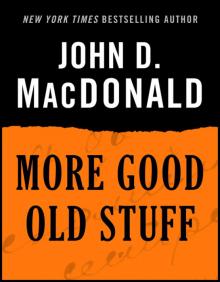 More Good Old Stuff
More Good Old Stuff The Long Lavender Look
The Long Lavender Look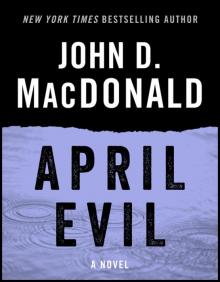 April Evil
April Evil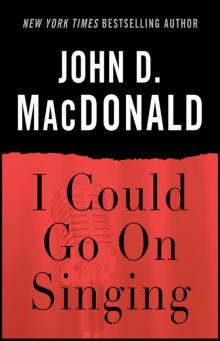 I Could Go on Singing
I Could Go on Singing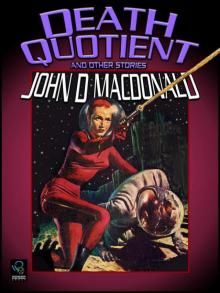 Death Quotient and Other Stories
Death Quotient and Other Stories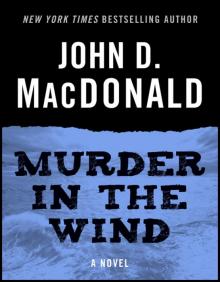 Murder in the Wind
Murder in the Wind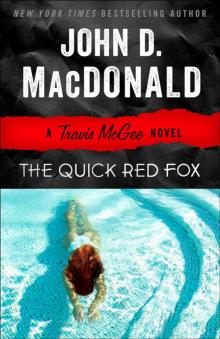 The Quick Red Fox
The Quick Red Fox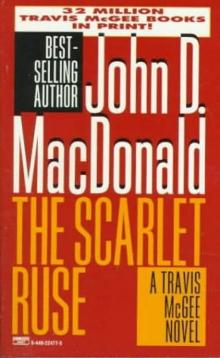 The Scarlet Ruse
The Scarlet Ruse Darker Than Amber
Darker Than Amber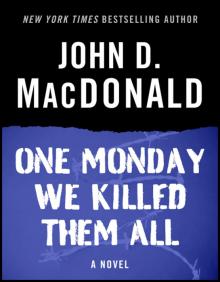 One Monday We Killed Them All
One Monday We Killed Them All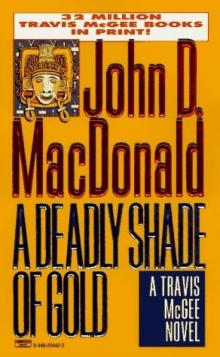 A Deadly Shade of Gold
A Deadly Shade of Gold The Girl, the Gold Watch and Everything
The Girl, the Gold Watch and Everything The Damned
The Damned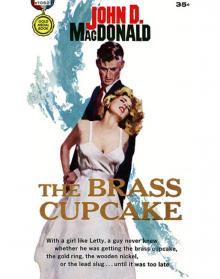 The Brass Cupcake
The Brass Cupcake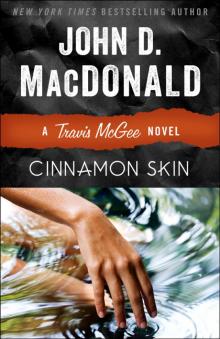 Cinnamon Skin
Cinnamon Skin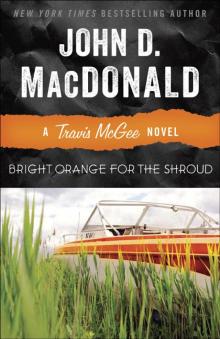 Bright Orange for the Shroud
Bright Orange for the Shroud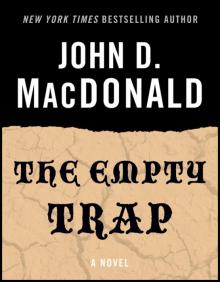 The Empty Trap
The Empty Trap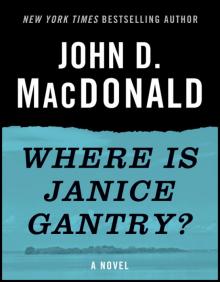 Where Is Janice Gantry?
Where Is Janice Gantry?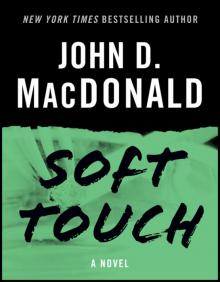 Soft Touch
Soft Touch Condominium
Condominium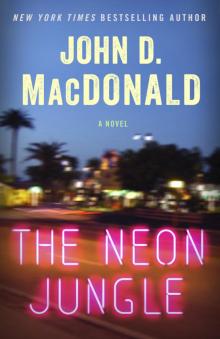 The Neon Jungle
The Neon Jungle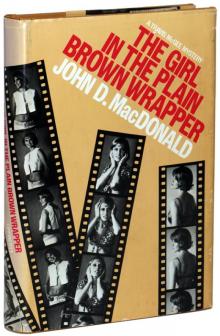 Girl In The Plain Brown Wrapper
Girl In The Plain Brown Wrapper All These Condemned
All These Condemned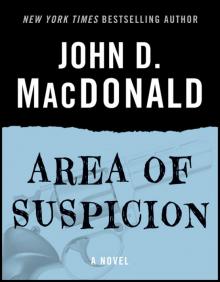 Area of Suspicion
Area of Suspicion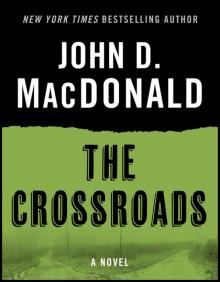 The Crossroads
The Crossroads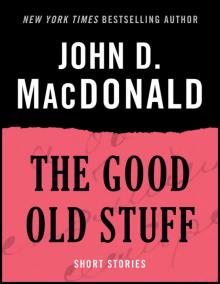 The Good Old Stuff
The Good Old Stuff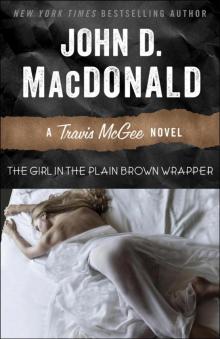 The Girl in the Plain Brown Wrapper
The Girl in the Plain Brown Wrapper The Beach Girls
The Beach Girls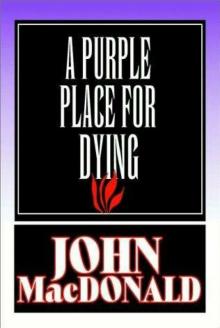 A Purple Place For Dying
A Purple Place For Dying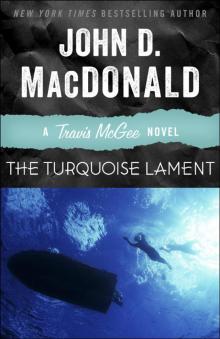 The Turquoise Lament
The Turquoise Lament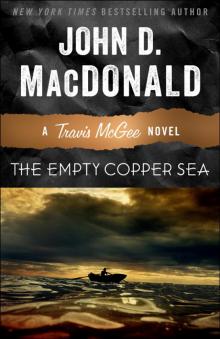 The Empty Copper Sea
The Empty Copper Sea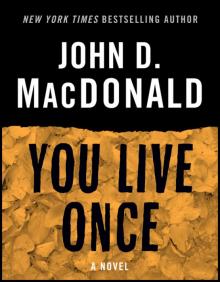 You Live Once
You Live Once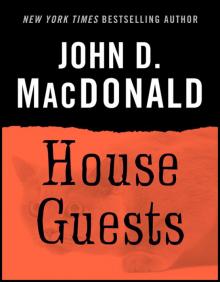 The House Guests
The House Guests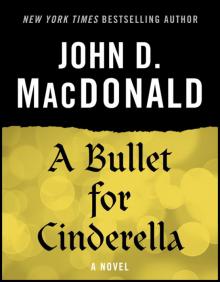 A Bullet for Cinderella
A Bullet for Cinderella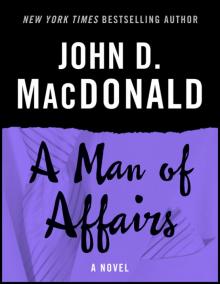 A Man of Affairs
A Man of Affairs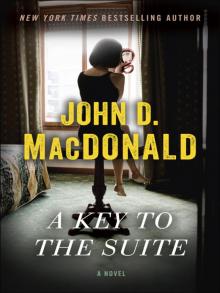 A Key to the Suite
A Key to the Suite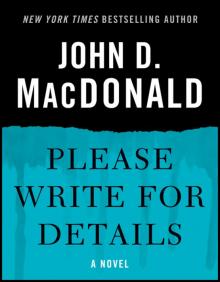 Please Write for Details
Please Write for Details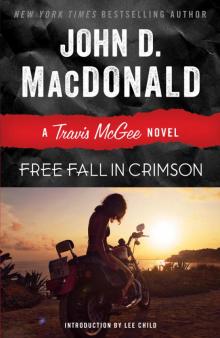 Free Fall in Crimson
Free Fall in Crimson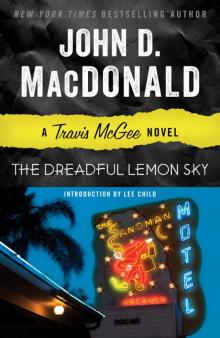 The Dreadful Lemon Sky
The Dreadful Lemon Sky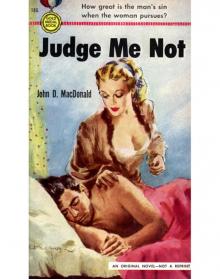 Judge Me Not
Judge Me Not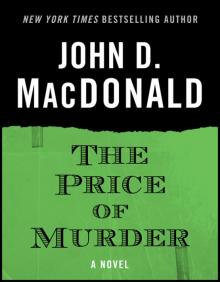 The Price of Murder
The Price of Murder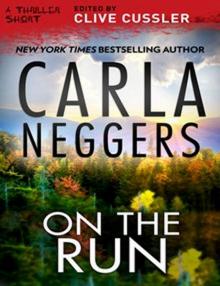 On the Run
On the Run The Deep Blue Good-Bye
The Deep Blue Good-Bye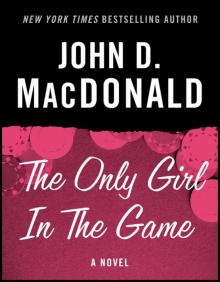 The Only Girl in the Game
The Only Girl in the Game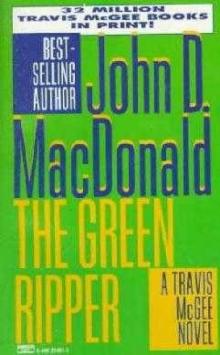 The Green Ripper
The Green Ripper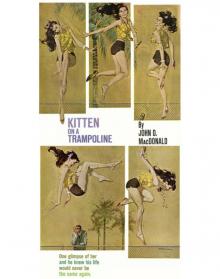 Kitten on a Trampoline
Kitten on a Trampoline Cry Hard, Cry Fast
Cry Hard, Cry Fast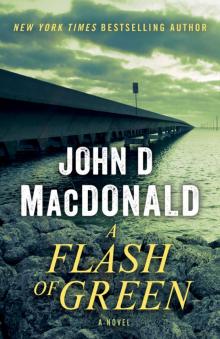 A Flash of Green
A Flash of Green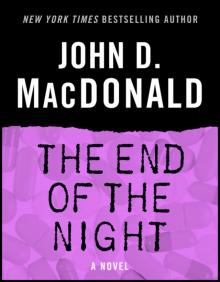 The End of the Night
The End of the Night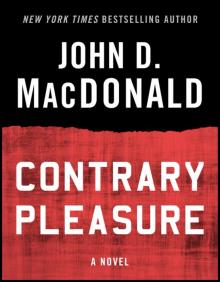 Contrary Pleasure
Contrary Pleasure Cape Fear
Cape Fear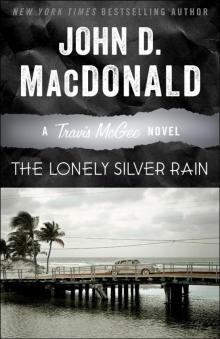 The Lonely Silver Rain
The Lonely Silver Rain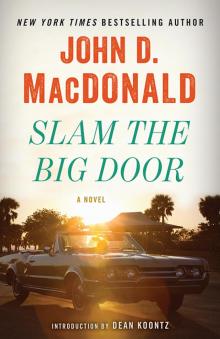 Slam the Big Door
Slam the Big Door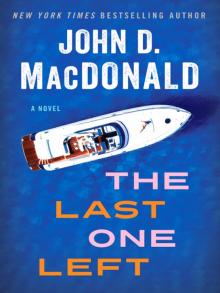 The Last One Left
The Last One Left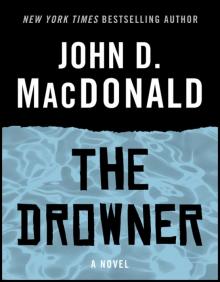 The Drowner
The Drowner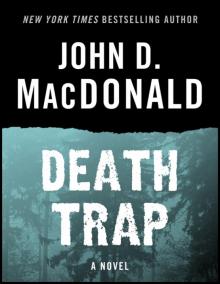 Death Trap
Death Trap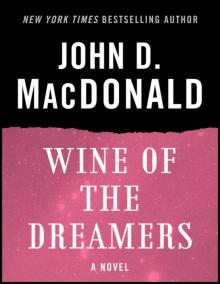 Wine of the Dreamers: A Novel
Wine of the Dreamers: A Novel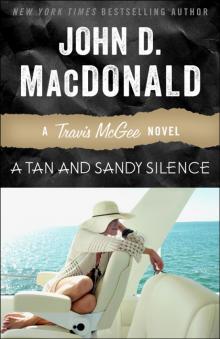 A Tan and Sandy Silence
A Tan and Sandy Silence One Fearful Yellow Eye
One Fearful Yellow Eye Border Town Girl
Border Town Girl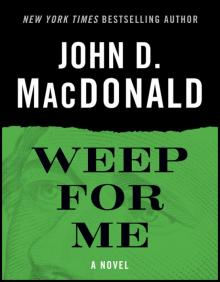 Weep for Me
Weep for Me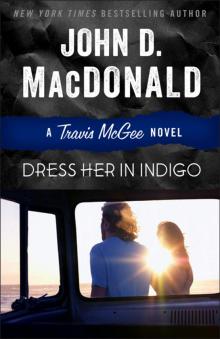 Dress Her in Indigo
Dress Her in Indigo Deadly Welcome
Deadly Welcome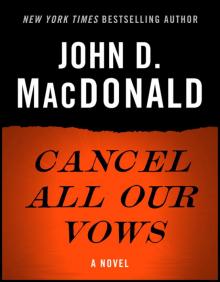 Cancel All Our Vows
Cancel All Our Vows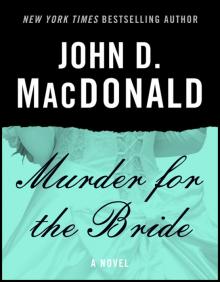 Murder for the Bride
Murder for the Bride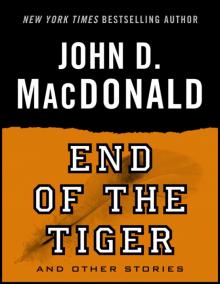 End of the Tiger
End of the Tiger